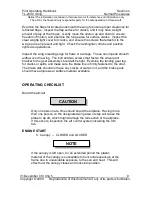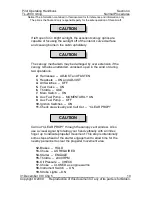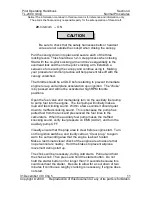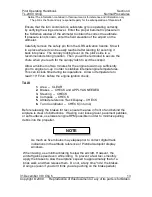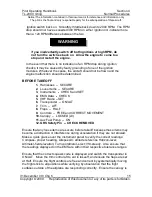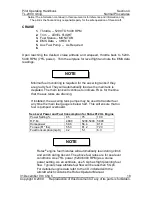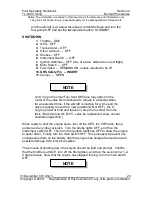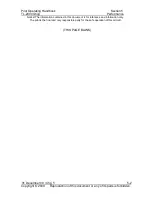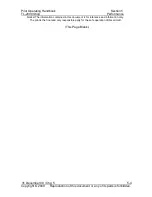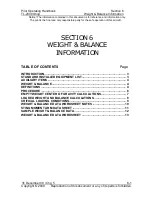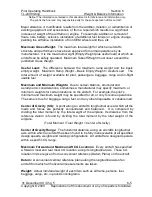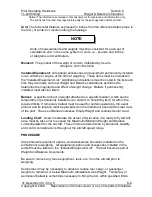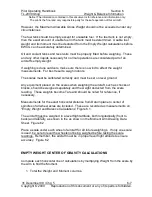
Pilot Operating Handbook
Section 4
TL-2000
Sting
Normal Procedures
Notice! The information contained in this document is for reference and information only.
The pilot is the final and only responsible party for the safe operation of this aircraft.
31 December 09 / Chg 5_____________________________________________23
Copyright © 2009 Reproduction of this document or any of its parts is forbidden.
and the aircraft is at a slow taxi speed, retract the flaps and turn the
fuel pump OFF and set the transponder back to STANDBY.
SHUTDOWN
1.
Throttle – IDLE
2.
GPS – OFF
3.
Transponder – OFF
4.
Other Avionics -- OFF
5.
Strobes – OFF
6.
Instrument Switch -- OFF
7.
Ignition Switches – OFF (one at a time, alternate on next flight)
8.
Main Switch -- OFF
9.
Fuel Valve -- REMAINS ON, unless required to be off.
10. GRS Safety Pin -- INSERT
11.
Canopy -- OPEN
An O ring in the small Fuel Shut Off Valve may attach to the
metal of the valve stem if allowed to remain in a fixed position
for an extended time. If the aircraft is inactive for a time and the
valve is quickly moved to a new position (ON or OFF), the O
ring may twist or bind and reduce or stop the fuel flow from the
tank. (Recommend the $10+/- valve be replaced at every annual
condition inspection.)
When ready to shut the engine down, turn off the GPS, the VHF radio, trans-
ponder and any other avionics. Turn the strobe lights OFF, and then the
instrument switch OFF. Then turn the Ignition Switches OFF to allow the engine
to spool down. Finally turn the main switch OFF. This process will prevent any
unnecessary drain on the battery after the engine has stopped as well as avoid
possible damage from “electrical spikes.”
The process of shutting down the engine should be fluid and prompt. Confirm
that the throttle is at IDLE, turn off the first ignition, and then the second in a 1-2-
3 step process. Now that the engine has stopped turning, turn the main switch
OFF.
NOTE
NOTE

